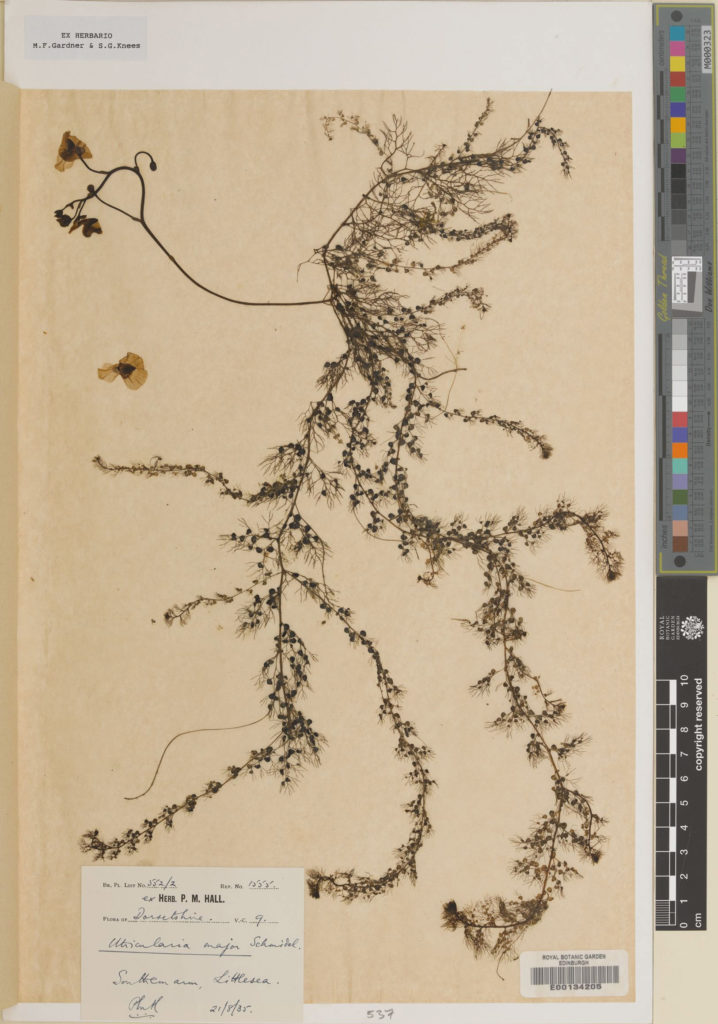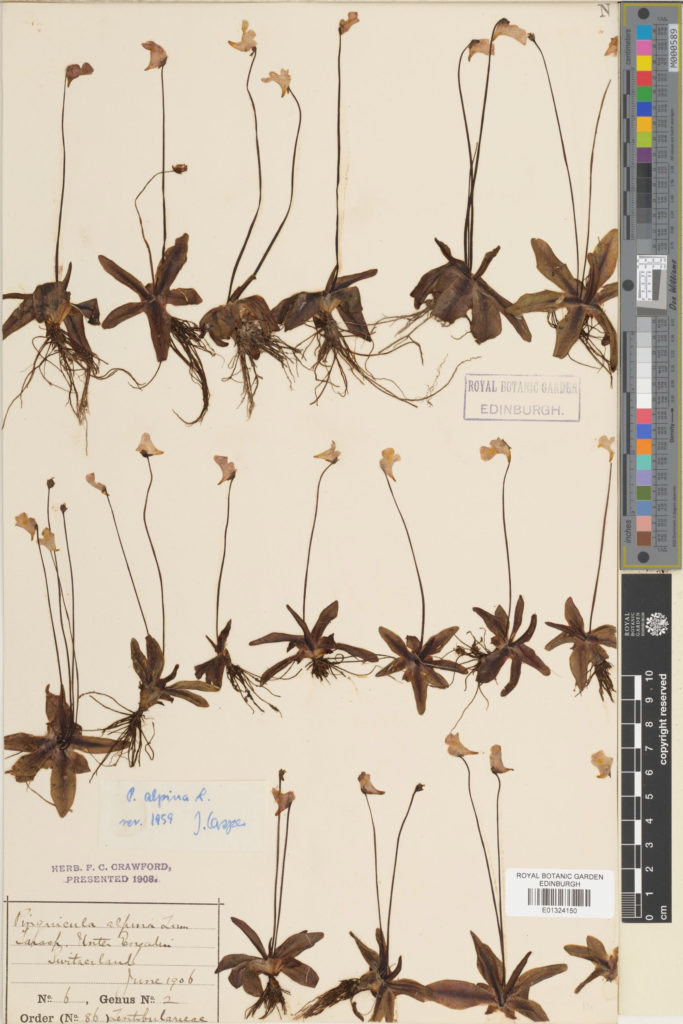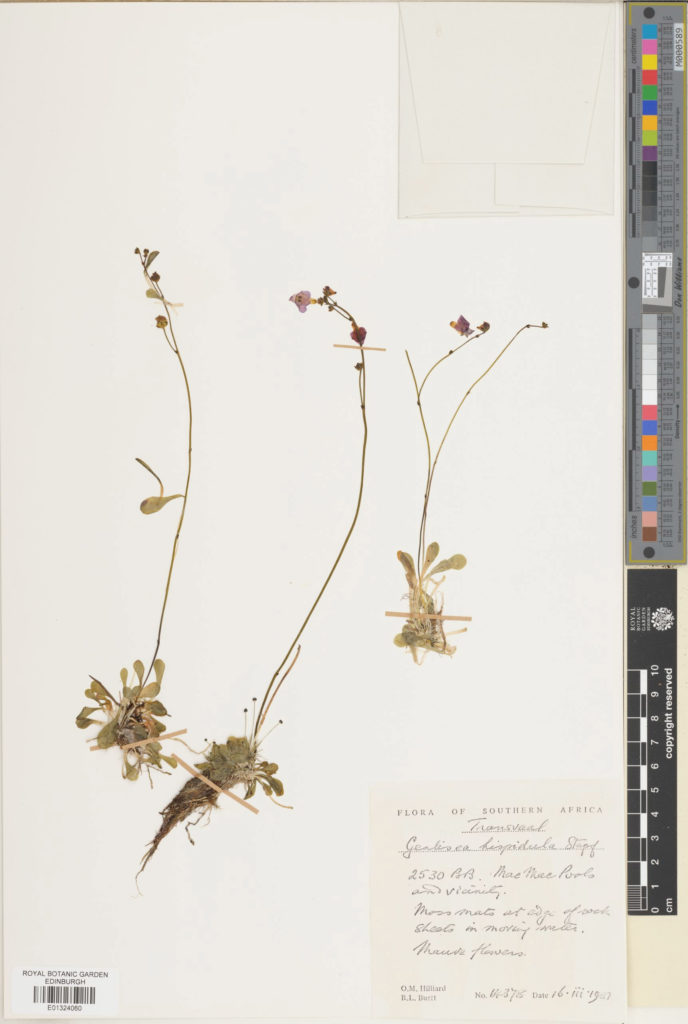The following blog was written by Rebecca Camfield a digitiser in the Herbarium.
Since 2021 we have increased our digitisation capacity with the goal of getting to 1 million specimens imaged by Autumn 2024. Each digitiser is assigned a family of plants to work through. This series of blogs will spotlight the families that have been completed by a member of the team.
Lentibulariaceae is a carnivorous family of three genera: Utricularia (the bladderwarts), Pinguicula (the butterworts) and Genlisea (the corkscrews).
They are found in wet terrestrial habitats through to being fully aquatic. All three genera feed by using specially adapted leaves to trap their prey.
Utricularia
There are over 200 species in Utricularia and it is found worldwide, or essentially anywhere that has fresh water except Antarctica. This includes damp cliff faces, wet moss and bark of tropical trees or even in water held by other epiphytes such as bromeliads. They can go through periods of dormancy to survive temperate winters or dry seasons. It is particularly species rich in South America and Australia. They are heavily cultivated for their flowers.
These plants catch prey in bladder like vessels. They vary in size depending on how aquatic the species is. Those in water have larger traps to catch organisms like water fleas (Daphnia), fish fry and even tadpoles. The traps use trigger hairs that the prey activates pulling them into the bladder due to the pressure difference. Once full of water the door closes again. It is very fast action, happening in milliseconds.

Pinguicula
There are approximately 80 species in Pinguicula. The genus is found throughout the Northern hemisphere and through the Americas to Argentina and Chile, with ~50% of the species found in Central America. They use sticky glandular leaves to catch insects but will also digest pollen. Those in temperate regions go through a winter dormancy.

Genlisea
Genlisea has approximately 30 species and is the smallest of the genera in Lentibulariaceae. It’s range is limited to Central and Southern America and Africa, including Madagascar. They have twisted corkscrew like structures that are submerged into the substrate to passively catch microbes. They grow in very wet soil, so are constantly being triggered and secrete enzymes.

Our Collections
Prior to the digitisation of the family we had records for 528 specimens, following the mass digitisation project we now have 2,317 records in our database, of these there are 40 types.
Genera
| No. of Specimens | Genus |
| 1,559 | Utricularia |
| 731 | Pinguicula |
| 13 | Genlisea |
| 14 | Polypompholyx* |
* Polyphomax has been synonymised with Utricularia, and the collection needs to be updated to reflect this. All 14 specimens are from Australia.
Top 5 Regions
| No. of Specimens | Herbarium Filing Region |
| 630 | Britain and Ireland |
| 316 | Europe excl. Britain and Ireland |
| 273 | North America |
| 137 | India, Bangladesh & Pakistan |
| 131 | Inner China, Korea and Taiwan |
The families high diversity in the Americas and Australia isn’t reflected in our top regions. In fact, we have under 100 specimens for most of the American filing regions and Australia. The distribution of collections better reflects where our historic collectors visited. Our coverage of Genlisea could also be improved as we currently have 13 specimens.
